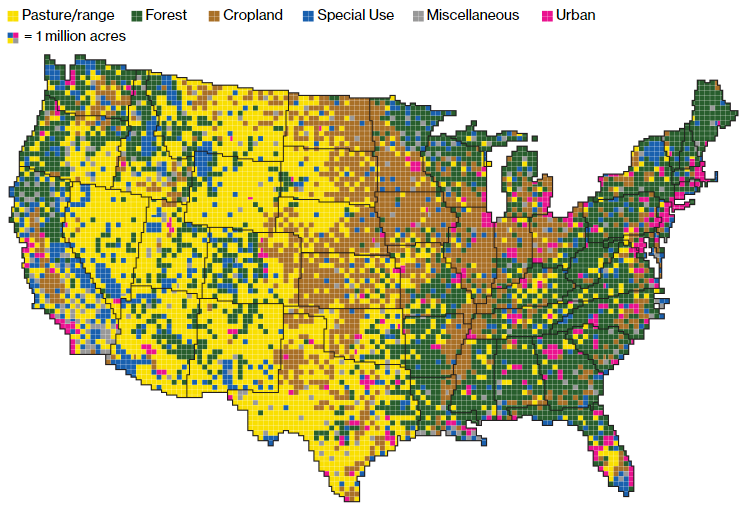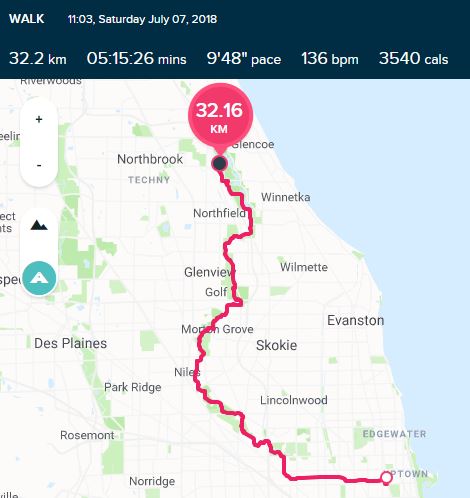I love to travel. So I was surprised to learn, after chasing a hunch, that I haven't been outside the state of Illinois since January 22nd, 194 days ago. I confirmed this with Google Timeline.
The last time I've gone this long without traveling to another state (or country), as far as I can tell, was 3 August 1981 to 5 March 1982, a gap of 214 days. But my family probably went up to Wisconsin at some point during that period, so I can't exactly call that a reliable record. Same with the 213-day gap between 4 January 1979 and 5 August 1979 that's on the record. (These dates come from my mom's journals, which is why I'm not sure they're complete.)
So it's possible that this is the longest time in my entire life that I've gone without crossing a state line. And if I don't leave Illinois before my next scheduled trip on August 31st, that'll be 221 days, and absolutely a lifetime record.
What surprises me even more is that I didn't realize this until yesterday. Weird.
Sediment under Lake Chichancanab on the Yucatan Peninsula has offered scientists a clearer view of what happened to the Mayan civilization:
Scientists have several theories about why the collapse happened, including deforestation, overpopulation and extreme drought. New research, published in Science Thursday, focuses on the drought and suggests, for the first time, how extreme it was.
[S]cientists found a 50 percent decrease in annual precipitation over more than 100 years, from 800 to 1,000 A.D. At times, the study shows, the decrease was as much as 70 percent.
The drought was previously known, but this study is the first to quantify the rainfall, relative humidity and evaporation at that time. It's also the first to combine multiple elemental analyses and modeling to determine the climate record during the Mayan civilization demise.
Many theories about the drought triggers exist, but there is no smoking gun some 1,000 years later. The drought coincides with the beginning of the Medieval Warm Period, thought to have been caused by a decrease in volcanic ash in the atmosphere and an increase in solar activity. Previous studies have shown that the Mayans’ deforestation may have also contributed. Deforestation tends to decrease the amount of moisture and destabilize the soil. Additional theories for the cause of the drought include changes to the atmospheric circulation and decline in tropical cyclone frequency, Evans said.
What this research has to do with the early 21st Century I'll leave as an exercise for the reader.
When I get home tonight, I'll need to read these (and so should you):
And now, I'm off to the Art Institute.
Bloomberg published on Monday a super-cool analysis of U.S. land use patterns:
Using surveys, satellite images and categorizations from various government agencies, the U.S. Department of Agriculture divides the U.S. into six major types of land. The data can’t be pinpointed to a city block—each square on the map represents 250,000 acres of land. But piecing the data together state-by-state can give a general sense of how U.S. land is used.

Gathered together, cropland would take up more than a fifth of the 48 contiguous states. Pasture and rangeland would cover most of the Western U.S., and all of the country’s cities and towns would fit neatly in the Northeast.
This is, of course, total Daily Parker bait.
The New York Times has published an interactive map showing the 2016 presidential election results at the precinct level. Generally, precincts are the smallest unit of reporting electoral data, often with just a few hundred people in them. My precinct, for example, has just over 1,000 residents and occupies less than 6 hectares.
A companion article breaks down how most of the precincts overwhelmingly went to one or the other candidate. Mine, for example, had 613 votes for Hillary Clinton and just 40 for Donald Trump. (And I'm wondering who the 40 could possibly be.)
The map we published also offers two bits of additional context to help you think about the 2016 vote.
First, we give you a measure of how the area around a precinct compares with other areas. That measure is based on the choices of the nearest 100,000 voters, as well as those within a 10-mile radius.
Second, we tell you how long it would take you to drive, without traffic, to the nearest precinct that voted for the other candidate of a major party. By these measures, for example, the area around the Times headquarters in Manhattan had a higher share of Clinton voters than 96 percent of the country, and the nearest Trump precinct, in Williamsburg, Brooklyn, is a 36-minute drive away.
It's total Daily Parker bait, of course.
As London broils in 34°C heat today, New Republic's Emily Atkin asks, "Why are some major news outlets still covering extreme weather like it's an act of God?"
The science is clear: Heat-trapping greenhouse gases have artificially increased the average temperature across the globe, making extreme heat events more likely. This has also increased the risk of frequent and more devastating wildfires, as prolonged heat dries soil and turns vegetation into tinder.
And yet, despite these facts, there’s no climate connection to be found in much news coverage of extreme weather events across the globe—even in historically climate-conscious outlets like NPR and The New York Times. These omissions, critics say, can affect how Americans view global warming and its impact on their lives.
Meanwhile, the Guardian (who, one hopes, have air conditioning in their offices) are reporting that 87% of the earth's oceans have human-caused damage.
Go, us!
I probably won't have time to read all of these things over lunch:
Share that last one with your non-technical friends. It's pretty clever.
It's been a busy news day:
There was also an article on tuple equality in C# 7.3 that, while interesting to me, probably isn't interesting to many other people.
My dentist is all the way up in Hubbard Woods, which turns out to be a 21.3 km walk from my house. I know that because I walked it this morning. In fairness, I did it in two roughly-equal parts with a stop in downtown Evanston for lunch.
But my total time for the walk, 3:12:36, over what was almost exactly a half-marathon, implies a legal finishing time for the Chicago Marathon (6:30 allowed for the 42.2 km course).
I'm in a step challenge with a co-worker who got 11,000 ahead of me yesterday. Let's see how he does with the 28,000 I've gotten so far today.
And, as predicted, I have already blown away my 7-day personal step record with 159,083 so far this afternoon.
Back in June 2016, I walked 29 km in one go, and posted "I don't need to do this ever again."
You can see where this is going.
Here's what I did yesterday:

That distance, 32.2 km, is exactly 20 miles. I actually walked about 800 m farther than that because I accidentally paused my Fitbit for a few minutes. Also, the map's big red 32.16 km (which is just short of 20 miles) appears to be a rounding error as you can see from the official total at the top.
This time I walked up the North Branch trail, and I'm proud to say I walked the entire length of the Red Path, from Gompers Park in Chicago up to the Skokie Lagoons Trail in Glencoe. It's shadier, and leafier, and doesn't parallel a working railroad. I mean, you don't meet this guy on the Green Bay trail, for example:

The weather was nearly perfect: 25°C under crystal-clear skies. (I might have done better a few degrees cooler.)
And now for my personal records (PRs):
- Farthest distance in one continuous walk: 32.2 km
- Most steps in one continuous walk: 36,942
- Longest continuous exercise (including biking): 5 hours, 15 minutes
- Most steps in one day: 47,452
- Farthest walked in one day: 41.09 km
- Most active minutes in one day: 520
Depending on the weather, on Thursday I expect to hit another PR: most steps in a 7-day period. Currently that's 147,941 (set February 27th), but the 7 days ending yesterday totaled only 144,651.
My top-5 single-day step records are now:
Also, not for nothing, I am kind of annoyed with myself that I didn't sucker any of my friends into a step challenge this weekend.